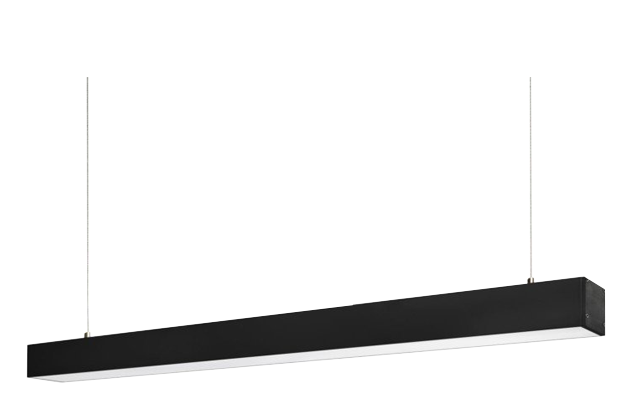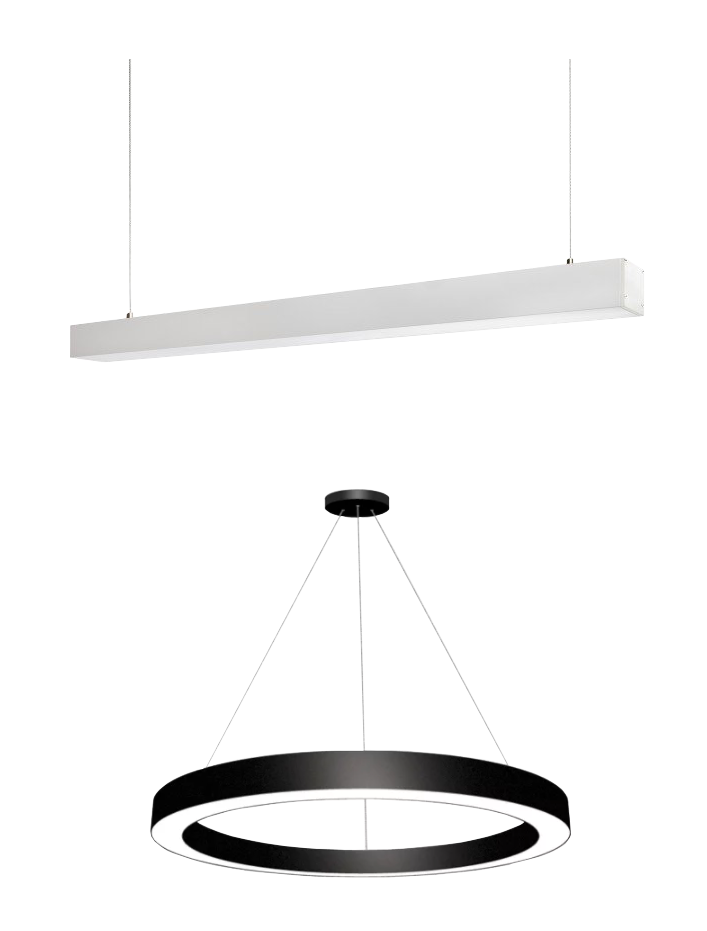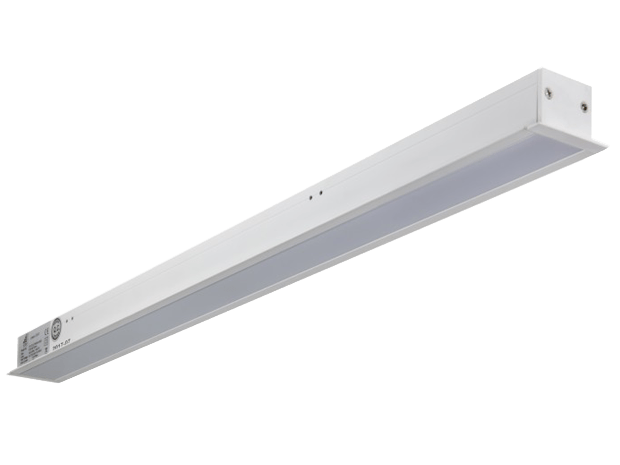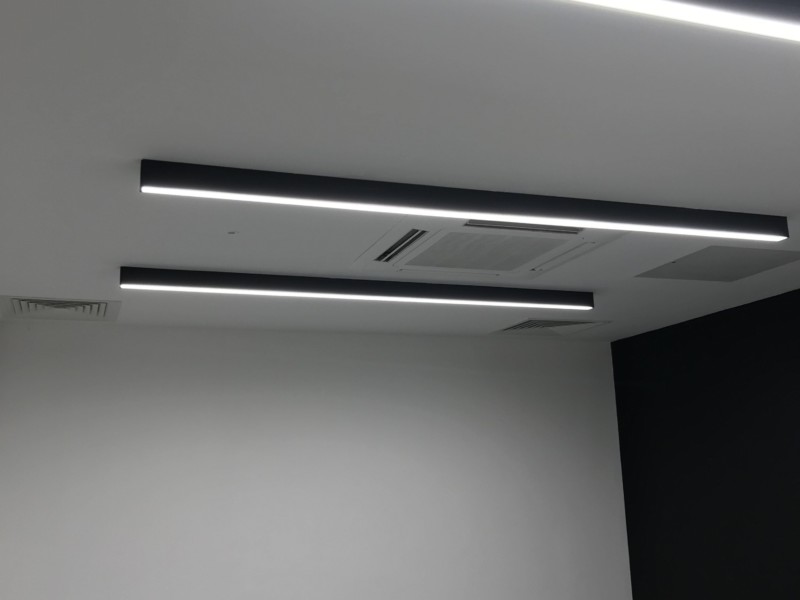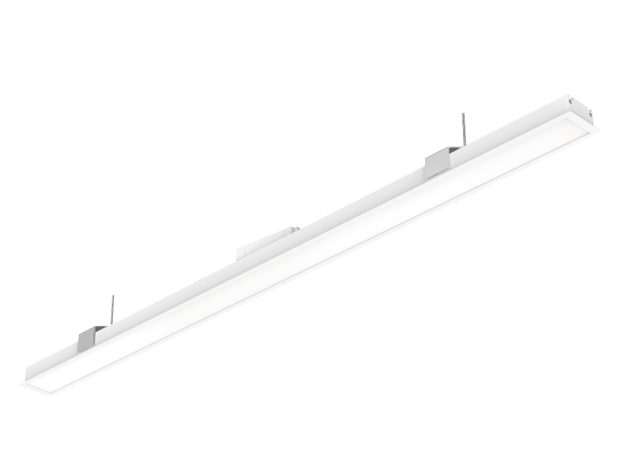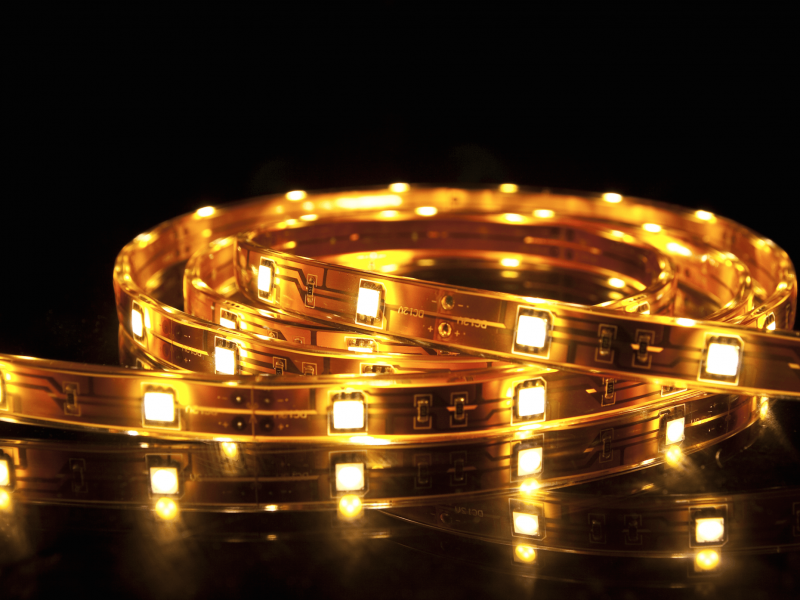 Free UK Delivery On Orders Over £120*
Free UK Delivery On Orders Over £120*
 Free UK Delivery On Orders Over £120*
Free UK Delivery On Orders Over £120*
 Secure Ordering
Secure Ordering
 Up To 5 Year Warranty
Up To 5 Year Warranty
 5* Service & Support
5* Service & Support
Illuminating Trends: A Comprehensive Guide to Linear Lighting for 2024
In the ever-evolving landscape of interior design, lighting plays a pivotal role in shaping ambiance, aesthetics, and functionality. Linear lighting, with its sleek design and versatility, has emerged as a cornerstone in modern lighting solutions. As we step into 2024, let’s explore the transformative potential of linear lighting and uncover innovative ways to harness its power in various settings.
Understanding Linear Lighting
Linear lighting, as the name suggests, refers to fixtures that emit light in a linear fashion, typically in the form of long, narrow strips. These fixtures come in various forms, including LED strips, linear pendants, and architectural lighting systems. What sets linear lighting apart is its ability to provide seamless illumination across spaces, creating a sense of continuity and visual appeal.
The Evolution of Linear Lighting Technology
Over the years, advancements in technology have revolutionised the landscape of linear lighting. In 2024, we witness the proliferation of LED technology, offering unparalleled energy efficiency, longevity, and versatility. LED linear fixtures are now thinner, more flexible, and capable of producing vibrant colors and dynamic lighting effects. Additionally, smart lighting controls have become increasingly prevalent, allowing users to customise brightness, colour temperature, and lighting schedules with ease.
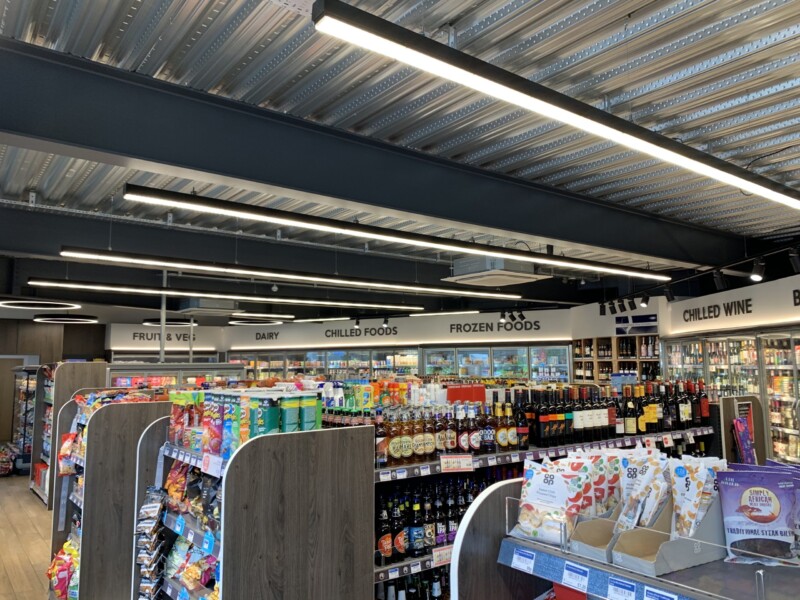
Applications of Linear Lighting
The versatility of linear lighting makes it suitable for a wide range of applications across residential, commercial, and architectural settings. In residential spaces, linear lighting can be used to enhance kitchen countertops, highlight architectural features, or create accent lighting in living areas. In commercial environments, linear fixtures can illuminate retail displays, define pathways in offices, or enhance the ambiance of hospitality venues. Architectural linear lighting systems offer endless possibilities for integrating lighting seamlessly into building facades, ceilings, and walls, transforming spaces into works of art.
Design Considerations and Trends
When incorporating linear lighting into design schemes, several factors should be considered to achieve optimal results. These include fixture placement, colour temperature, brightness levels, and lighting controls. In 2024, we observe a growing emphasis on minimalist designs, with linear fixtures seamlessly integrated into architectural elements for a clean, cohesive look. Dynamic lighting effects, such as tune-able white and colour-changing capabilities, are also on the rise, allowing designers to create immersive experiences that adapt to different moods and activities.
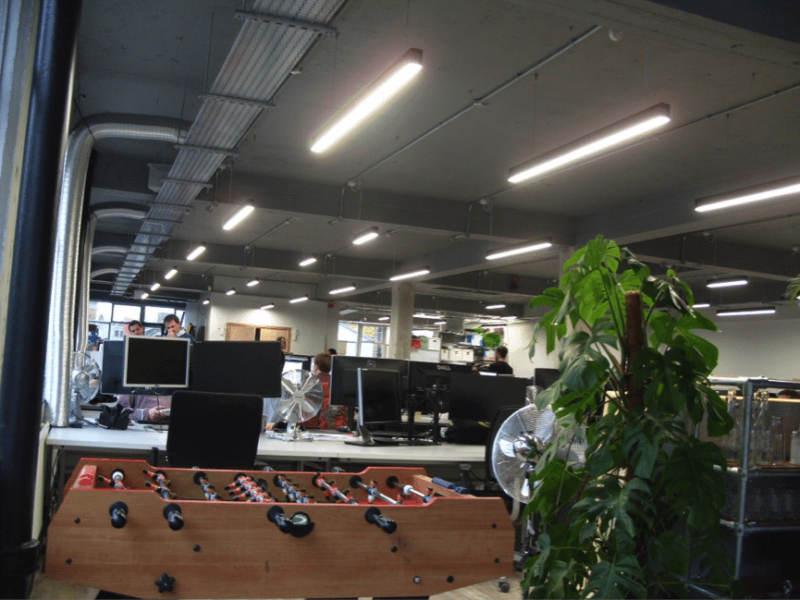
Sustainability and Energy Efficiency
In an era marked by increasing environmental consciousness, sustainability has become a driving force in lighting design. LED linear fixtures, with their energy-efficient properties and long lifespan, are leading the charge towards greener lighting solutions. Additionally, advancements in materials and manufacturing processes have enabled the production of eco-friendly fixtures that minimise carbon footprint and waste generation.
Future Directions and Innovations
As we look towards the future, the potential of linear lighting continues to expand with ongoing research and innovation. Emerging trends such as organic LED (OLED) technology, which offers thin, flexible panels capable of emitting uniform light, hold promise for revolutionizing the way we illuminate spaces. Furthermore, the integration of artificial intelligence (AI) and Internet of Things (IoT) technologies is set to further enhance the functionality and adaptability of linear lighting systems, paving the way for smarter, more connected environments.
Conclusion
In the dynamic world of lighting design, linear lighting stands out as a versatile, innovative solution with boundless potential. From residential interiors to commercial spaces and architectural landmarks, the transformative power of linear lighting continues to shape the way we experience and interact with our surroundings. As we embrace the possibilities of 2024 and beyond, let us harness the brilliance of linear lighting to illuminate our world with creativity, sustainability, and ingenuity.
Linear Lighting In Stock NOW
WHAT ARE THE DIFFERENT TYPES OF LINEAR LIGHTING?
Linear lighting can completely transform the feel of a space and features significantly in contemporary architecture.
– Suspended Linear Lighting
– Recessed Linear Lighting
– Surface Linear Lighting
– Modular Linear Lighting
– Strip Lighting
WHAT IS SUSPENDED LINEAR LIGHTING?
Suspended linear lighting incorporates a light fixture that hangs from the ceiling, usually suspended on wires or chains. This type of fixture provides a clean, continuous, linear profile of light, creating a contemporary feel for a range of applications.
Suspended linear lighting can be mounted in a variety of styles, lengths and combinations to enhance architectural interest or complement the chosen space. Suspension lighting is particularly suited to spaces with generous ceiling height.
Similarly, they can be used to create stunning accent lighting. From illuminating a stairway or atrium to showcasing a reception desk, suspended linear lighting is used to make a statement in a variety of spaces.
Traditionally, suspended linear profiles are straight. However, they can also be shaped to create curved profiles. Although subtler, straight profiles can be equally eye-catching, particularly when installed in dramatic, geometric designs.
In open-plan spaces, curved profiles are particularly effective and can be used to create a sense of movement through space. Similarly, circular profiles are often used to divide space into different areas.
Imagine an LED linear ring suspended lower than the surrounding lighting. This application can create a sense of focus in particular areas and is extremely effective when installed in museums or galleries to highlight exhibits.
WHERE CAN I BUY LINEAR LED LIGHTS?
The range and types of linear LED lights are vast, and it can be confusing as to which option is best for your project. Our lighting specialists are happy to shed some light on how you can create stunning office spaces or exceptional results in any commercial or public area.
WHAT IS RECESSED LINEAR LIGHTING?
Recessed linear lighting is installed in a hollow opening in a surface, such as a ceiling or a wall. This type of linear LED can be used to create clean, invisible lines or shapes of light that blend seamlessly into the ceiling and wall surfaces of a space to become a part of its fabric.
Recessed lighting can have a powerful impact and often transforms a space, adding the wow factor to contemporary architectural design. Increasingly popular in the workplace, recessed linear lighting requires thoughtful design.
WHAT IS SURFACE LINEAR LIGHTING?
Surface LED linear lights are mounted on walls and ceilings. Traditionally given the reputation of being somewhat utilitarian in design, today’s surface lighting provides much more than a practical solution.
While surface lighting is the ideal choice for low and vaulted ceilings and can be used effectively to light circulation areas, staircases and spaces with restricted access, thanks to developments and enhancements in both design and technology, unique and striking designs can still be created using surface linear LED lighting.
Surface-mounted linear lighting can be used effectively to enhance architectural features and can be integrated with joinery details to add interest to a range of different spaces.
While wall-mounted lighting may be the only option for illuminating certain spaces in some listed buildings, for example, it is becoming an increasingly popular first choice in a range of contemporary commercial interiors.
Surface-mounted lights are frequently used in office environments. For example, surface mounted linear lights can be installed between wooden slats to create a calmer environment for break-out and informal meeting areas.
WHAT IS MODULAR LINEAR LED LIGHTING?
Linear lighting designs are not restricted to single luminaries. Many suspended, recessed and surface light products can be linked together to create modular lighting designs. From subtle to standout designs, whether bold or slim lines, modular linear lighting can be used to create schemes to suit any space.
WHAT IS LED STRIP LIGHTING?
Depending on the application, an effective alternative to linear lighting may be strip lighting.
LED strips are flexible and can be purchased by the length. This allows the user to buy the length of strip required for the application. While linear lighting can, of course, be linked, individual linear luminaires are usually sold in predetermined lengths.
While both are easy to install, the flexibility of LED strips means they are particularly effective for use in hard to reach and peculiarly-shaped areas. Want to know more? Read our Guide to LED Strip Lights to learn more about choosing and installing strip lighting.
LED light strips however usually have exposed circuits and wiring. This can render them less suitable for visible applications, unlike linear lights which tend to be housed in sleek fixtures.
Both linear and strip lights are suitable for use in a range of directional applications, offering style and functionality for any lighting design.
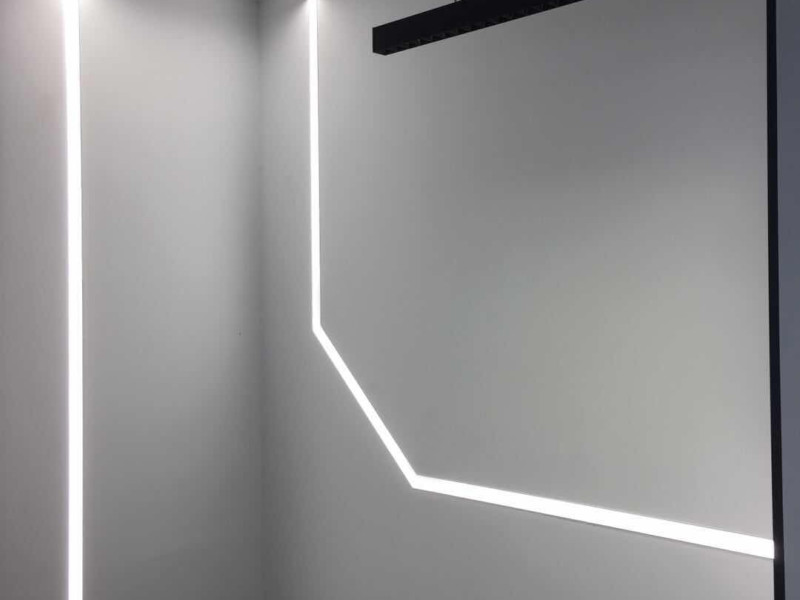
WHAT IS UGR (Unified Glare Rating)?
There are several standards and regulations around lighting in general for use in public areas and workspaces. Glare from lighting is one of the main regulations, as excessive glare can cause eyestrain, headaches and migraines and make an uncomfortable space to work in.
UGR (Unified Glare Rating) is used as a measure of glare and calculated by the glare from all visible lamps divided by the background lamination of the room. When it comes to an office environment, a UGR of less than 19 is considered acceptable for best concentration.
LED linear lighting distributes light evenly to help avoid glare, which is another advantage over traditional linear fluorescent lights.


